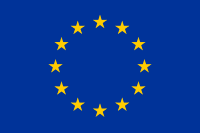Designing a Model for Community Participation
Evolving inDICEs Community Creation
Isang: Local Museum Curator
What if:
Scenario 2: What if I, as a local curator could learn more about digitising my content with proposals in order to pitch an event and receive feedback.
Persona
- Goals: effectively digitise content in local museum to share and with correct regulations around IP
- Background: local museum curator
- Pronouns: He/Him
- Pain points: limited resources
- Needs: resources and tools for best practices for small museums and possibly legal advice
User Scenario
Isang is a local museum curator who is searching for best practices around digitising their museum’s content especially on a smaller scale. They have some broad ideas about how to approach this task, but also want to create an event for others like her so that they can share their experiences. They use the InDICEs platform to pitch an activity by writing a proposal and asking other users for comments. Because they want to create more traffic around their proposals he uses a widget that lets them know what relevant and trending tags could boost their proposal’s visibility.
AUTOMATED DATA CONTENT ANALYSIS
Report inappropriate content
Is this content inappropriate?






0 comments
Add your comment
Sign in with your account or sign up to add your comment.
Loading comments ...